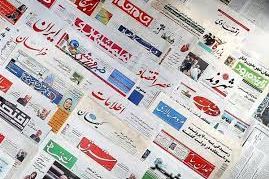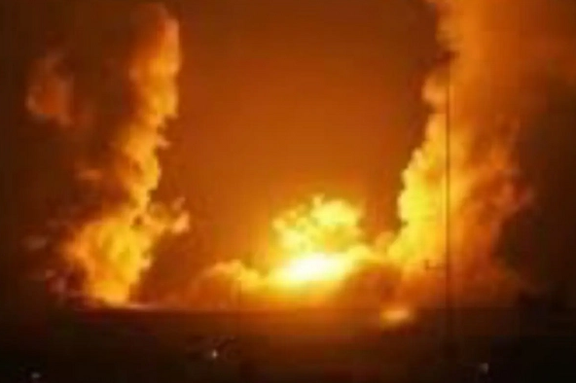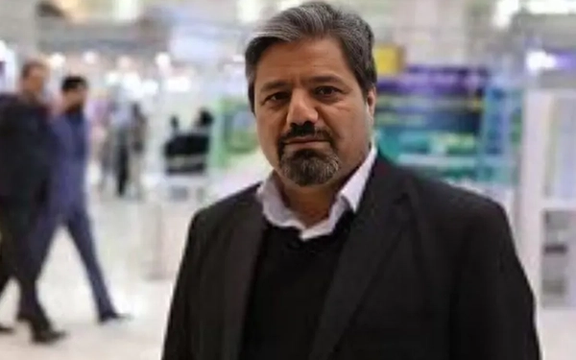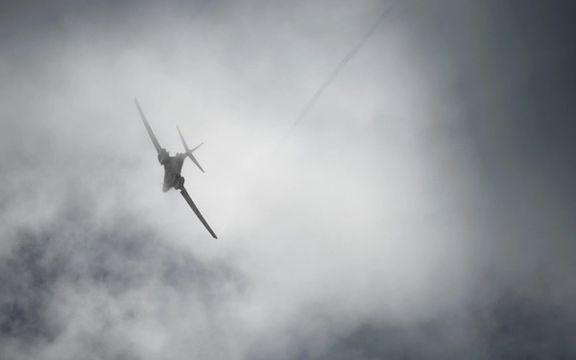Iranian Medical Society Expresses Concern Over Brain Drain

Secretary-general of the Iranian Medical Society has warned about emigration of elite workforce and professionals from various medical and non-medical sectors amid economic crisis.

Secretary-general of the Iranian Medical Society has warned about emigration of elite workforce and professionals from various medical and non-medical sectors amid economic crisis.
Speaking about the current state and future prospects of Iran during the general assembly of the Iranian Medical Society, Mohammad-Reza Zafarqandi expressed deep concern, noting that vital signs pointing to an emigration crisis have reached a critical juncture.
Zafarqandi emphasized the alarming increase in demand for permission from the medical system for professionals seeking to leave the country. Amidst the celebrations marking the 45th anniversary of the Islamic revolution, he lamented the challenges faced by the country, saying "A system that was supposed to be dignity and prosperity based on the principles of republicanism, Islam, has brought Iran face to face with challenges and failures in all three aspects."
Additionally, he highlighted the distant path taken in the Islamic aspect of the system, deviating from the ideals of justice, ethics, freedom, and rights, as initially envisioned during the revolution.
The Secretary-General drew attention to critical conditions prevailing in various sectors, including the economy, politics, academia, environment, and public health. He stressed the alarming decline in social capital and trust in governance.
Furthermore, Zafarqandi revealed alarming statistics, indicating that approximately 80 percent of medical students are considering leaving the country.
“Many professors from the country's universities are leaving. Today, important fields such as heart surgery, emergency medicine, anesthesia, and many medical fields do not have volunteer applicants, and residency positions remain vacant," he warned.

Over 20 journalists and media outlets and managers in Iran underwent judicial scrutiny in January 2024, a group monitoring freedom of speech and media in Iran reported.
According to Defending the Free Flow of Information (DFI) latest monthly report released on Friday, three journalists were detained during the month, while another journalist was apprehended to serve a sentence. Additionally, four journalists, in separate cases, were collectively sentenced to three years of imprisonment, fines amounting to 200 million rials (equivalent to approximately 350 dollars), two years of exile, and a two-year ban on leaving the country or engaging in online activities.
The charges levied against journalists during the period ranged from spreading misinformation to undermining public opinion, anti-government propaganda, disregarding hijab, insulting the political leadership, and disclosing classified documents.
Moreover, the press courts handed down criminal convictions against eight journalists, with sentences ranging from imprisonment to other punitive measures. Five journalists or media managers faced formal charges, leading to property confiscation for one individual and personal belongings seized by security institutions for another.
Throughout January, at least 13 newspapers and news websites came under judicial scrutiny, further exacerbating concerns regarding press freedom in the country.
The situation in Iran reflects a broader global issue, with Iran a leading persecutor of journalists among the ranks of China, Russia, and Belarus, and one of the most oppressive regimes concerning freedom of expression and media liberties. The pervasive nature of the crackdown on freedom of expression extends even to government-controlled media, highlighting the extent of the challenge facing journalists and media practitioners in Iran.

In response to US attacks in Iraq and Syria overnight on February 2-3, a high-ranking Houthi official said the group will stand by “resistance movements” in the region.
“We reaffirm our support for and solidarity with resistance movements in Iraq, Syria, Palestine, and the region,” IRGC-affiliated Tasnim news agency quoted Ali al-Qahoum, a member of Yemeni Houthis’ politburo, as saying.
Hotuhis, who receive extensive assistance from Iran, are part of Tehran's web of armed groups throughout the region.
On Friday night, the United States hit about 85 targets linked to IRGC Quds Force and affiliated militia groups in Iraq and Syria.
The strikes were carried out in response to an attack on January 28 by Iran-backed militants against a US base in Jordan which claimed the lives of three American soldiers and left more than 40 injured.
So far, there has been no reaction from Iranian officials to US strikes. However, in what can be interpreted as an indirect reaction, IRNA, the Iranian state news agency, published a report highlighting Iran’s “defensive and military capabilities.”
Though US President Joe Biden and Secretary of Defense Lloyd Austin vowed to hold accountable “all” sides who had a part in the deadly Jordan incident, White House National Security Spokesperson John Kirby said Monday that Washington is not seeking conflict with Iran or regional escalation.
On Friday, Iranian President Ebrahim Raisi remarked that “the enemy cannot take any action against us because it knows that our forces are powerful and capable.”
“Previously...they used to talk with threats and military options on the table. But now, there are no such talks, and they say they have no intention of conflict with the Islamic Republic. It is the strength of our people and our armed forces that has created this deterrence,” he went on to say.

US airstrikes on dozens of Iran-related targets in Iraq and Syria were just the beginning of retaliatory attacks on Iran’s IRGC, Pentagon chief said Friday night.
Minutes into Saturday (3 February) local time, US military hit more than 85 sites belonging to IRGC Quds Force and its allied armed groups, in retaliation for last weekend’s drone attack on a US base in Jordan which killed 3 American soldiers and wounded more than 30.
“‘This is the start of our response,” US secretary of defense Lloyd Austin said in a statement shortly after the attack.. “The President has directed additional actions to hold the IRGC and affiliated militias accountable for their attacks on U.S. and Coalition Forces. These will unfold at times and places of our choosing.”
More than 125 precision munitions were employed in the 30-minute attack, according to US Central Command. The targets included “command and control operations centers, intelligence centers,” and drone and missile storages belonging to “militia groups and their IRGC sponsors who facilitated attacks against U.S. and Coalition forces.”
The operation was by far the biggest and most extensive attack against Iran and its proxies since last October. Its impact, however, is harder to gauge in the absence of reliable information. The Syrian Observatory for Human Rights war monitor has claimed that at least 18 Iran-backed fighters have been killed in the strikes –their nationalities still unknown.
However, early Saturday, AlJazeera reported that IRGC Quds force had no base in the targeted areas, raising more questions about the merits of the operation after nearly a week of public chatter that can give potential targets enough notice to relocate or shelter.
“Unfortunately, the administration waited for a week and telegraphed to the world, including to Iran, the nature of our response,” US House Speaker Mike Johnson wrote on X. “Now is the time for President Biden to wake up to the reality that his policy of placating Iran has failed.”
Shortly after the airstrikes, President Biden reiterated that he doesn’t want a war with Iran. “But let all those who might seek to do us harm know this,” he added, if you harm an American, we will respond.”
Armed groups in Syria and Iraq, funded and trained by Iran, have launched more than 150 attacks against American soldiers since Israel began its onslaught against Gaza.
“Iran's Islamic Revolutionary Guards Corps (IRGC) Quds Force and affiliated militia groups continue to represent a direct threat to the stability of Iraq, the region, and the safety of Americans,” CENTCOM commander Gen. Michael Erik Kurilla said Friday night. .” We will continue to take action, do whatever is necessary to protect our people, and hold those responsible who threaten their safety."
US officials told reporters that the Biden administration has no plans to bomb Iran, even though they believe that it had armed the groups behind the Tower 22 attack.
“The goal here is to get these attacks to stop,” US national security spokesperson John Kirby said. “We’re not looking for a war with Iran.”
Experts say the retaliatory strikes Friday night were clearly designed to minimize the risk of a direct confrontation between the US and Iran, while destroying the latter’s arsenal in Syria and Iraq. In the Congress, many are opposed –and have been opposed– to the idea of a cautious and limited response.
“Iran and its proxies have tried to kill American soldiers and sink our warships 165 times while the Biden administration congratulates itself for doing the bare minimum,” Senator Roger Wicker of the Armed Services Committee posted on X. “Instead of giving the Ayatollah the bloody nose it deserves, we continue to give him a slap on the wrist.”
But the director of operations of the Joint Staff Gen Sims, rejected the notion that the delay in response to the killing of American soldiers was to give Iran time to pull its forces out of danger. The targets of the retaliation, he pointed out, would have scattered as soon as their weapons had been fired, so the 5-day delay did not make much difference. But there were many reports by news agencies and local observers who noted Iran was pulling out top commanders and assets from potential target areas.

Canada’s refugee board has ruled that Majid Iranmanesh cannot stay in the country because of his high level connections to the Iranian government, one of nine Iranians who now face possible deportation.
The 54-year-old was director general of Iran’s Vice-Presidency for Science and Technology. He entered Canada using a visa issued in Turkey.
Iranmanesh is one of nine alleged senior members of the Iranian regime who face possible deportation. He said in the hearing that he arrived in Canada on May 29, 2023, with the intention of conducting research at the University of Victoria for one year. The Canada Border Services Agency has said it was investigating 141 such cases. Thirty-eight have been closed without action.
At a hearing on January 11, Iranmanesh denied holding a senior position in the government, and said he wanted to return to Iran as soon as possible. In his testimony, he acknowledged working for the Iranian government since 2017. He admitted that he was the director general of administration of information technology at the Vice-Presidency for Science and Technology until 2020, and since then he has been a consultant working on contract.
The Canada Border Services Agency argued he “continues to be a high valued senior official” in the Iranian government and should be deported. Immigration and Refugee Board of Canada member Mary Heyes agreed, ruling that Iranmanaesh served in the top half of the hierarchy of the regime, and was therefore a senior official.
The Vice-Presidency for Science and Technology oversees operations of the Centre for Innovation and Technology Cooperation (CITC), which has been sanctioned by the United States and United Kingdom for supporting Iran’s nuclear and missile programs. “The Center for Innovation and Technology Cooperation is in a position to support a range of Iran’s weapons of mass destruction and military procurement objectives,” according to the US Treasury.

The United States has started attacks on Iran-backed positions in Syria and Iraq, hitting about 85 targets linked to IRGC Quds Force and affiliated militia groups.
The strikes are believed to be just the first in a multi-tiered response by President Joe Biden's administration in response to the weekend attacks that were carried out by Iran-backed militants against a US base in Jordan.The attack over the weekend resulted in the death of three American service members and left more than 40 injured. Jordanian aircraft also joined the operation and were assigned targets.
Tasnim news agency, affiliated with Iran's IRGC, reported that the several people have been killed in the attacks. Al-Jazeera said that 10 people have been killed and at least 18 people are injured in the attacks. Syrian Observatory for Human Rights said 18 members of Iran-backed groups were killed and that the airstrikes destroyed 26 positions sheltering Iranian militias in Al-Mayadeen and Al-Bokamal near borders between Syria and Iraq, in addition to airstrikes targeting positions near Deir Ezzor City.
A senior administration official told CNN the United States will not strike inside Iran – only focusing on targets outside of the country.
US CENTCOM has confirmed the attacks have begun, saying the airstrikes have targeted Iran’s Islamic Revolutionary Guards Corps (IRGC) Quds Force and affiliated militia groups.
"The airstrikes employed more than 125 precision munitions. The facilities that were struck included command and control operations, centers, intelligence centers, rockets, and missiles, and unmanned aired vehicle storages, and logistics and munition supply chain facilities of militia groups and their IRGC sponsors who facilitated attacks against US and Coalition forces," CENTCOM said.
The White House said in a statement that US military forces struck targets at facilities in Iraq and Syria that the IRGC and affiliated militia use to attack US forces. "Our response began today. It will continue at times and places of our choosing," read the statement.
"The United States does not seek conflict in the Middle East or anywhere else in the world. But let all those who might seek to do us harm know this: If you harm an American, we will respond."
Syrian state media also said that an 'American aggression' on a number of sites on Syria's desert areas and the Syrian and Iraqi border resulted in a number of casualties and injuries. There are also reports that the attacks are not limited to Syria.
The report came as B-1 bombers have left Lakenheath Air Base in Britain for a mission in the Middle East, a Pentagon official told Sky News Arabia, amid reports on an imminent US airstrike against the positions of Iran-backed militants in Iraq and Syria.
US defense officials said a combat strike mission involving several B-1B "Lancer" heavy bombers is currently enroute toward the Middle East alongside KC-135 Aerial-Refueling Tankers from RAF Lakenheath in the UK, which will accompany the bombers for their transit towards US Central Command’s Area-of-Responsibility.
The Pentagon had said it did not want war with Iran and did not believe Tehran wanted war either, even as Republican pressure increased on Biden to deal a blow directly against Iran.
The Revolutionary Guards have scaled back deployment of their senior officers in Syria due to a spate of deadly Israeli strikes and will rely more on allied Shiite militia to preserve their sway there.